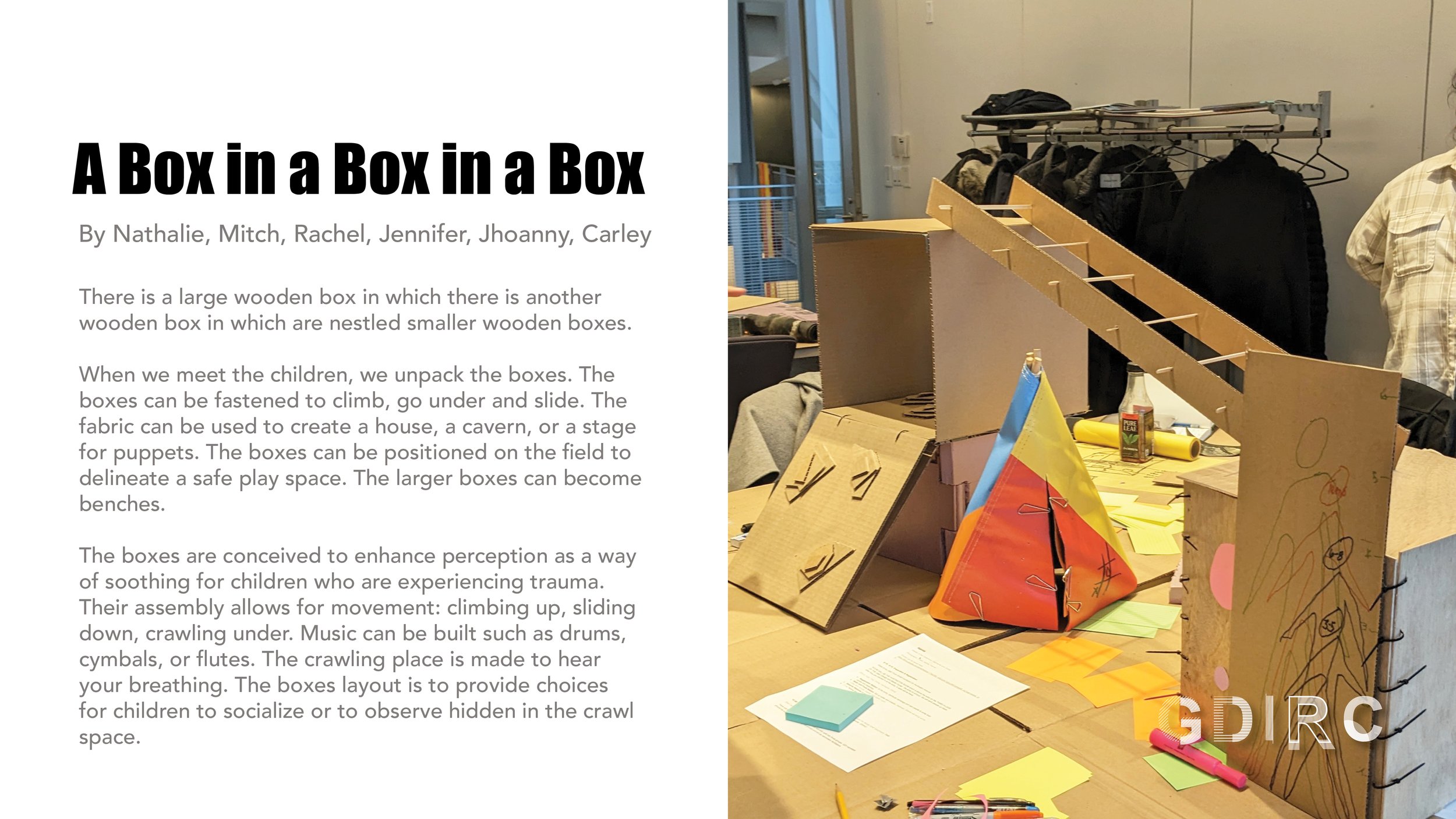Portable Play
Light, mobile and interactive play to be deployed anywhere.
Through our own experiences and collaborations with partners and communities, we recognize the need for play environments that are interactive, transportable, and non-permanent to be community inclusive, socially healing, replicable, and scalable.
We had a series of events focusing on ideation of portable play elements and how play and artistic interventions can heal the traumas.
Timeline: 2023.02 - (Ongoing)
Team Members: GDIRC Team
Key Speakers/Consultants: Martha Eddy, Mitchell Kossak, Sara Brunelle, Erin Huges, Karen Melikian
Why Portable Play?
Through different projects in the last few years, we learned many lessons about the reality of refugees. Although the ground condition of each camp site varies, many of them feature permanent impermanence. For example, although the average stay of refugees in a camp can be considered permanent, there is often restriction in building any permanent structures. What is also different from regular design processes is that the site condition is uncertain when we start the design process, and it is often changing during the design, and even construction stages. Instead of building a fixed playground and expecting the children to come, it is almost the opposite - the play has to follow where the children are.
Albeit the impressive resiliency of children, many of them experienced trauma in their country of origin, during their flight and in resettlement. Children can have aggressive behaviors during play and some may choose not to talk for months.
We want to explore portable play activities that can be easily transported and implemented to anywhere and play for healing that helps the children to resolve psychosocial difficulties so that whatever objects or programs we design can be more adaptive and effective.
What is Portable Play?
Play can take many shapes and forms; in the same way, portable play is less of a fixed definition but more like a lens to allow multiple interpretations.
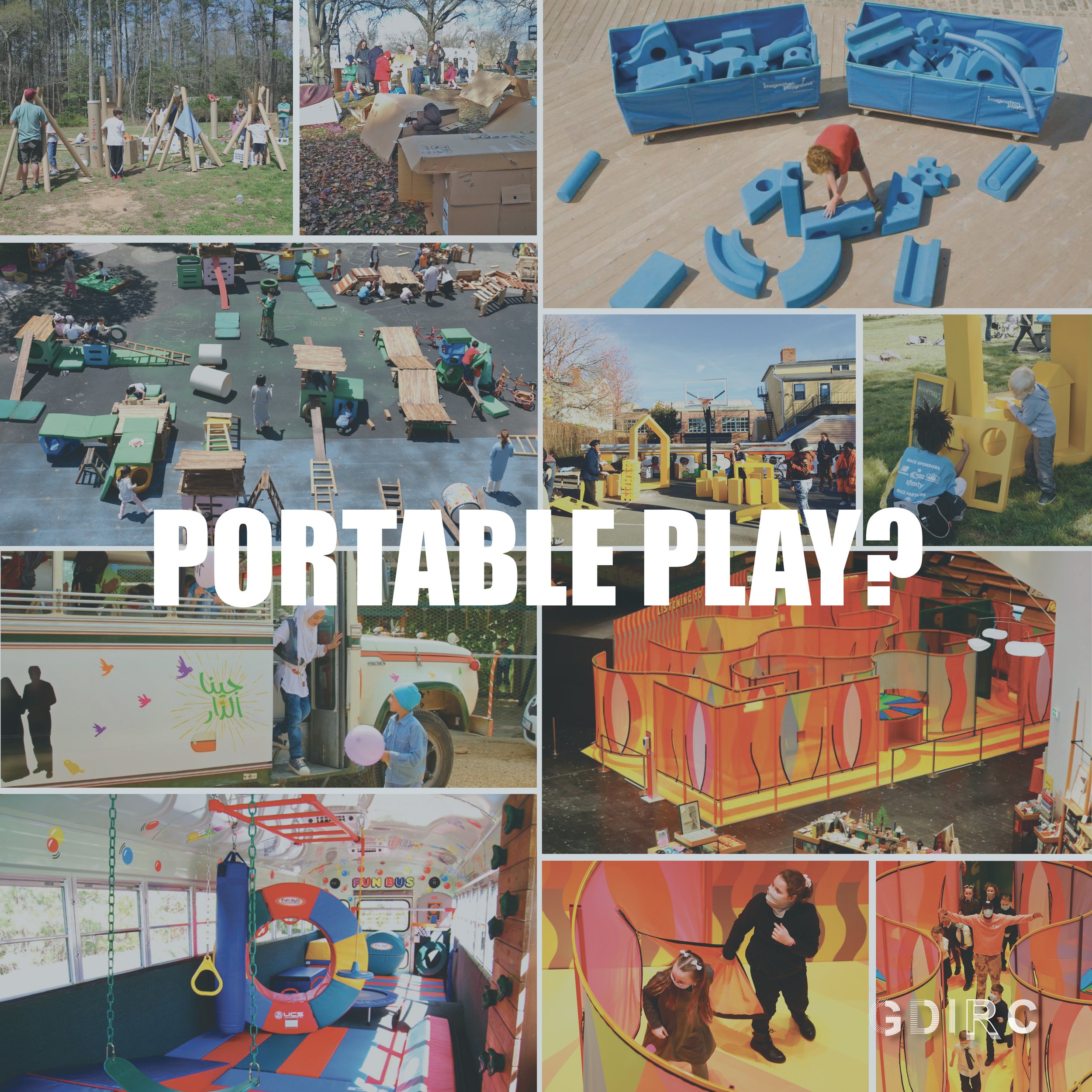
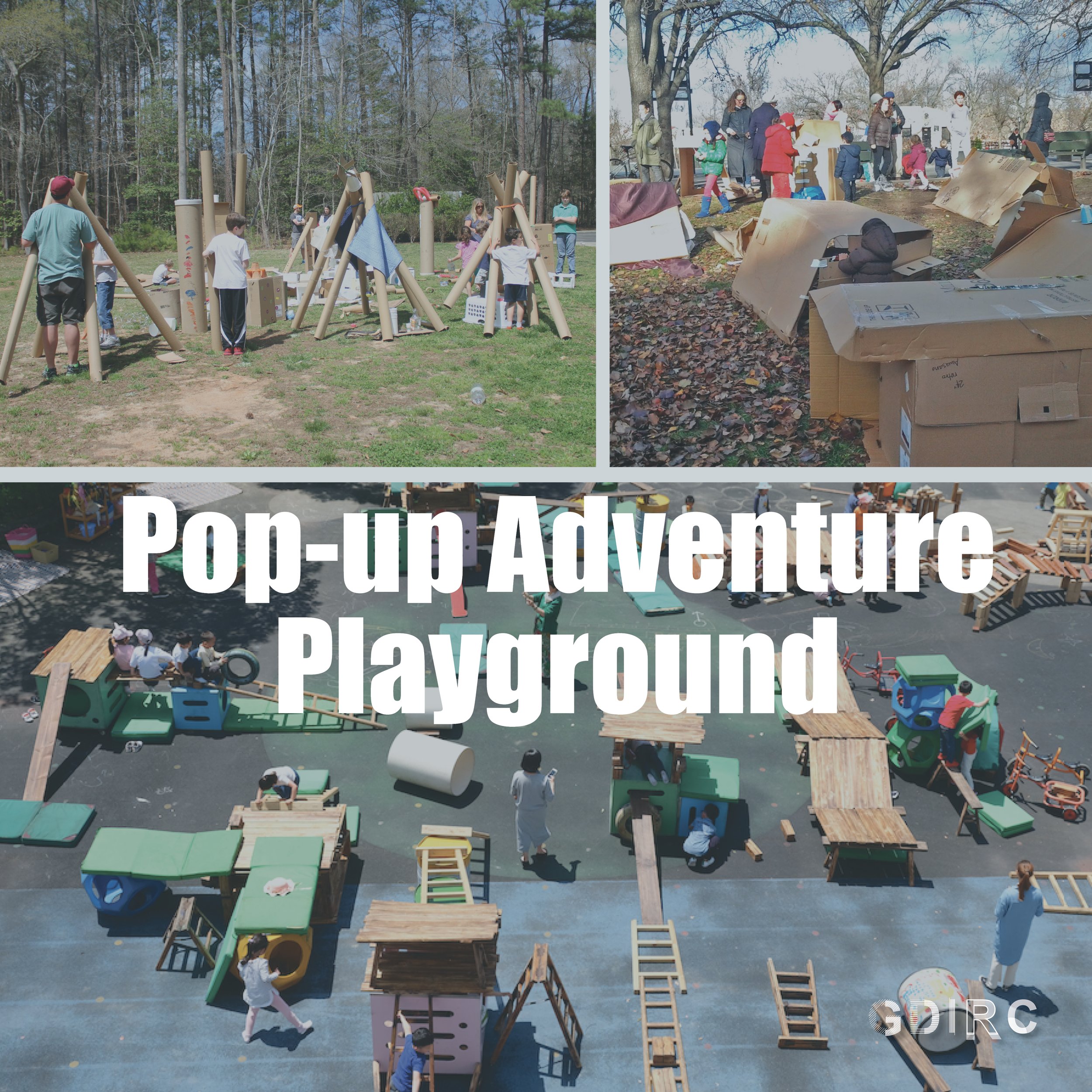
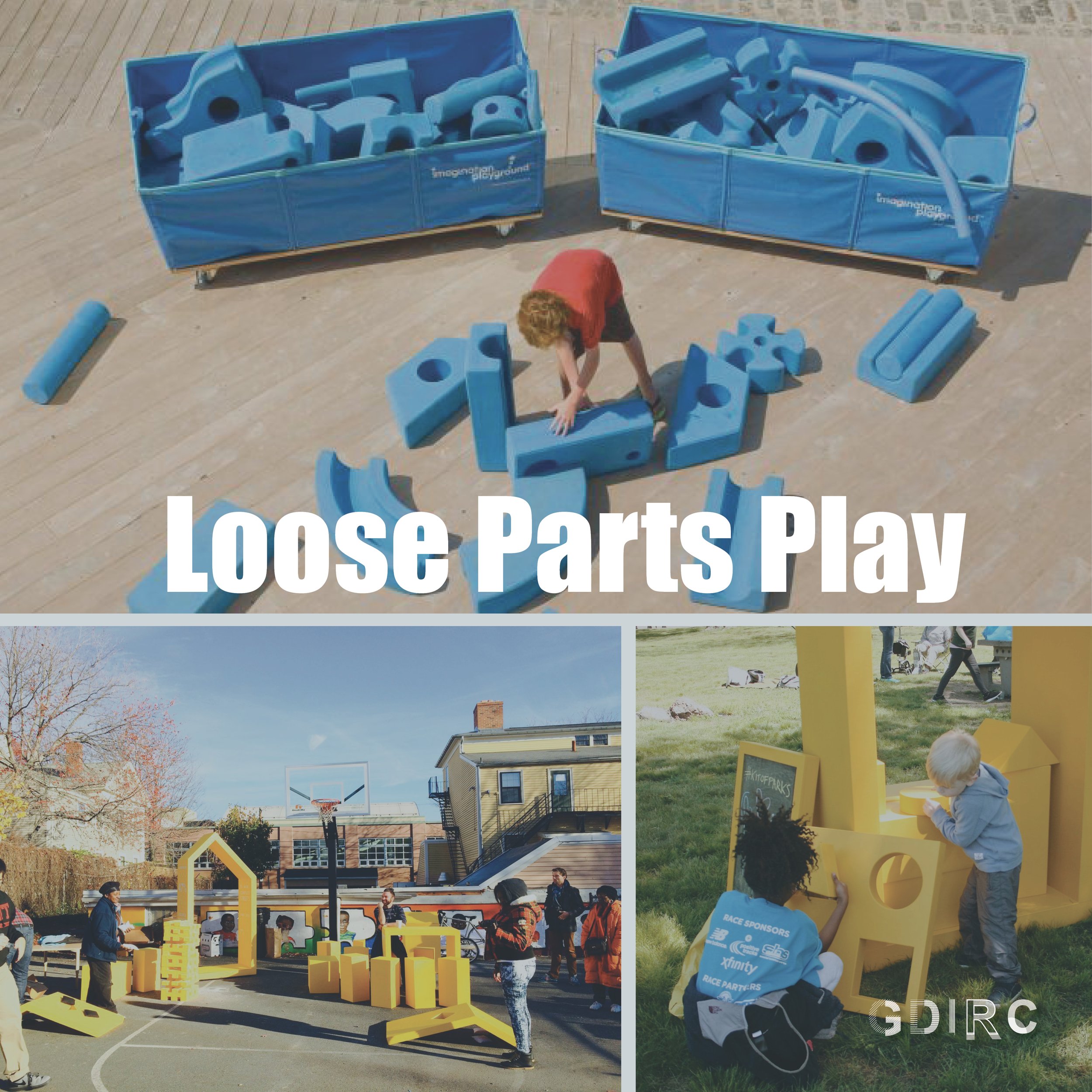
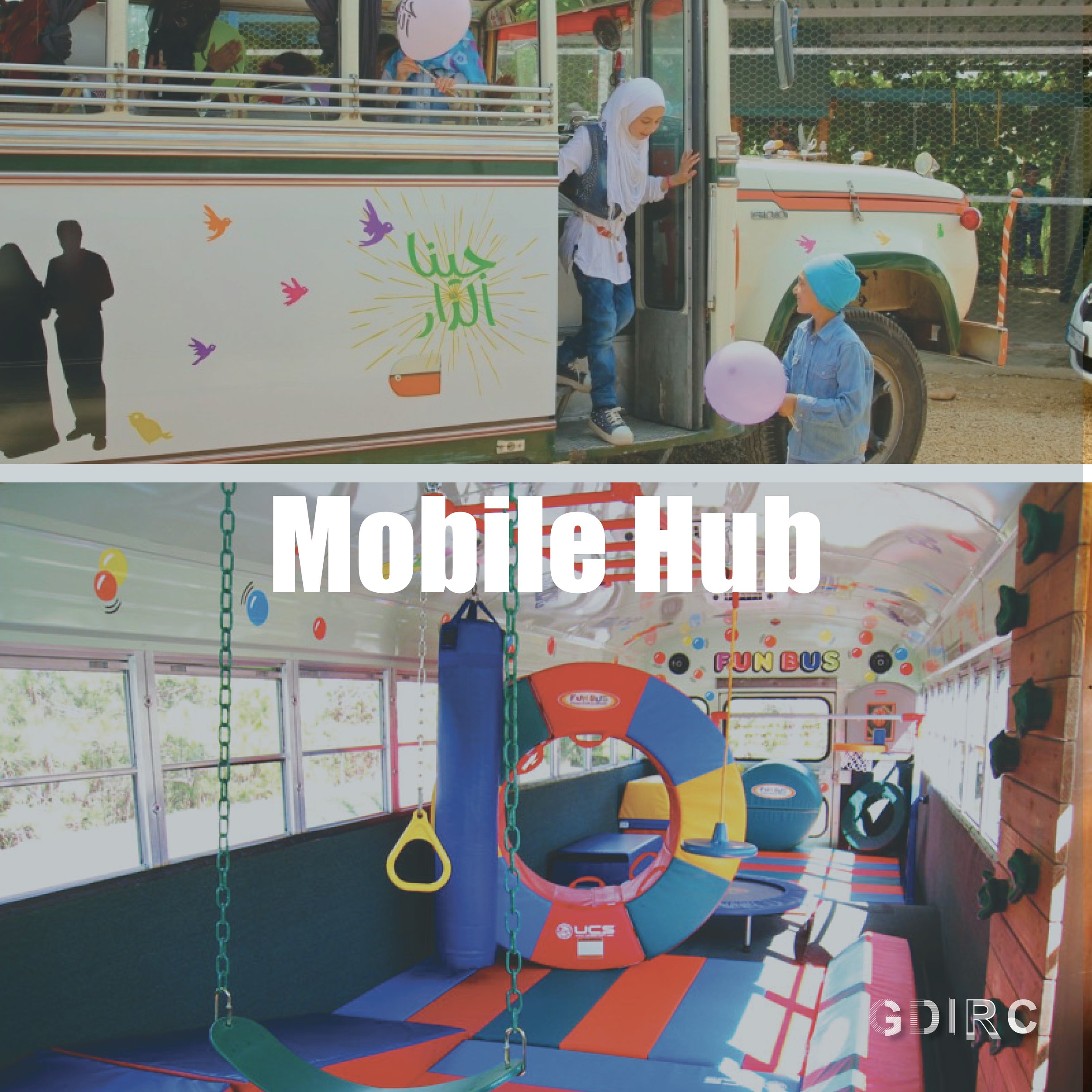
Event 1 - Roundtable Discussion
February 28th, 2023
On Feb 28th, we hosted a virtual roundtable on the topic - “Exploring Portable Play: Supporting Child Development and Healing”. The discussion was split into two sections. In the first section, we focused on the ability of portable play elements to support healing, child development, and community. Dr. Mitchell Kossak, an expressive arts therapist, and Dr. Martha Eddy, a practitioner and educator in somatic awareness and dynamic embodiment were the panelists.
The second section zoomed into the ground condition of the camp and discussed the challenges and potential interventions for a portable environment in refugee camps. Sara Brunelle, a landscape architect and play advocate, and Erin Hughes, the principal engineer and founder of Solidarity Engineering were invited to speak on this topic.

Section 1 speakers
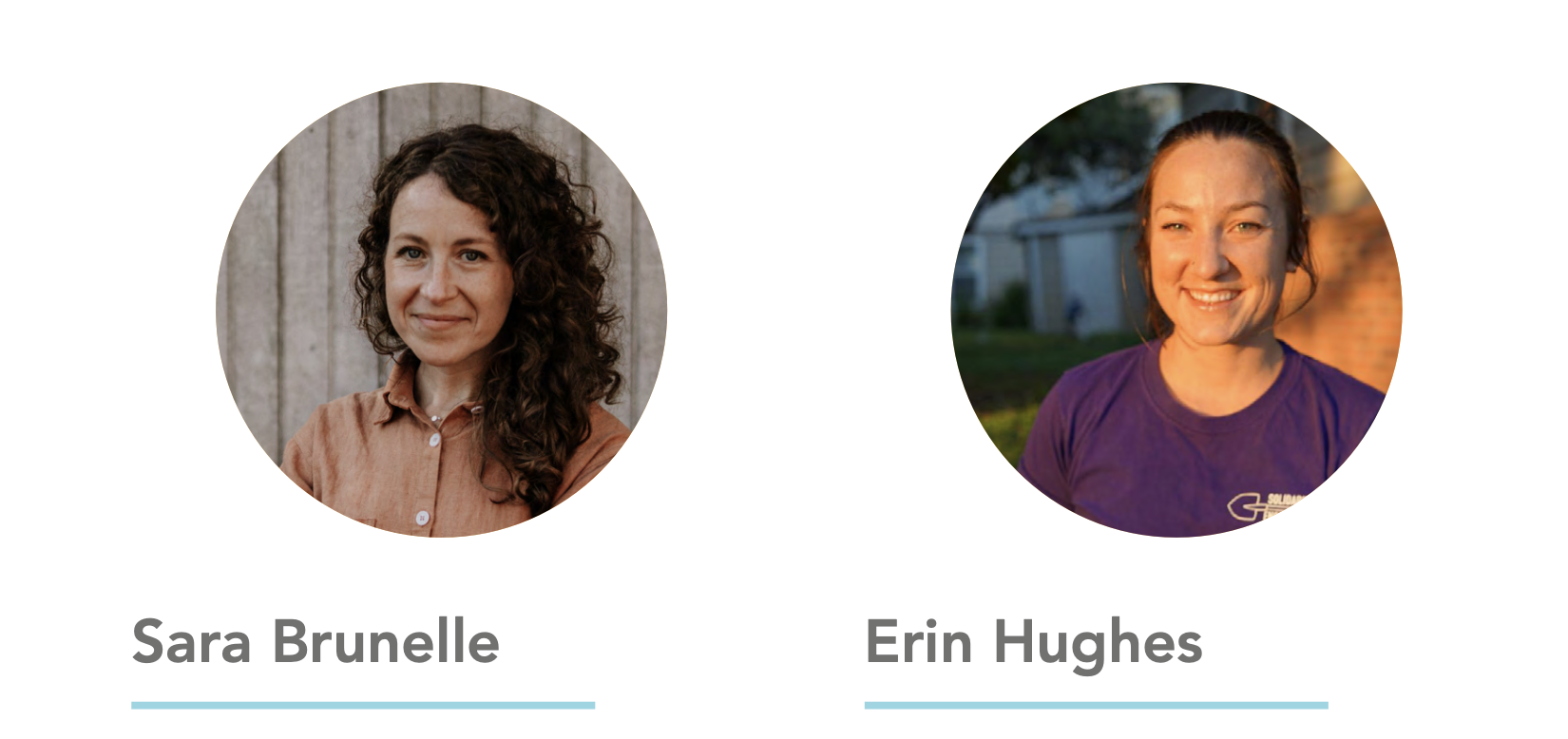
Section 2 speakers
Lessons Learned
The involvement of the community, particularly parents, is crucial to designing effective play interventions for displaced children.
Rhythm, both in music and body movement, can be beneficial in regulating the nervous system and promoting self-regulation.
Children are keenly attuned to their environment and will respond positively to a safe, relaxing, and healing play space.
Adventure playgrounds and loose parts play offer opportunities for children to develop confidence, socialize across age, gender, and ability, and create their own worlds.
Effective play interventions should include not only the physical design of the space but also a curriculum and proper staffing.
While children are adaptable, routine and predictability are important considerations when designing portable play interventions.
More Questions
What types of play activities have been found to be most effective for promoting healing among displaced children?
Are there any play activities that may trigger or exacerbate trauma in children who have experienced conflict or displacement?
Could the removal of a play component trigger separation and loss trauma in children?
Is loose-parts play lacking clarity? What’s the right ratio between movable and fixed structures?
What is the appropriate scale for portable play interventions, and should they be designed as individual products or collective objects?
How should cultural considerations be incorporated into the design of portable play? Should it also be educational?
In resource-limited environments such as refugee camps, how can play be emphasized as a survival need in the face of competing basic needs?
Given staffing shortages, how can the design of portable play respond to this challenge, and can older children take on a leadership role in supervising younger children?
Event 2 - Design Charrette
March 25th, 2023
On March 25th, we hosted a design charrette with about 20 participants on portal play at Massachusetts College of Art and Design.
The day started with a presentation on GDIRC and the key takeaways from our roundtable, followed by the announcement of our design brief. Our goal was to produce spatial play objects that could be easily deployed and assembled in refugee camps across the world. The design parameters included: efficiency, open-endedness, scalability, safety, cross-cultural accessibility and practicality.
We then split into three groups and started reflecting on our most enjoyable childhood memories about play. After sharing our thoughts with the team, we individually developed our ideas. An abundance of simple crafting materials (wood, dowels, popsicle sticks, clay, glues, cardboards, etc.) were provided and categorized into structures, skins, and fasteners to make mock up models.
In the afternoon, we found common threads between individual projects and each group worked collaboratively on one or two projects.
Finally, we had a pin-up and each group presented their ideas. Karen Melikian, a child and adult psychoanalyst, was invited to give critiques on various mock-ups.
LESSONS LEARNED
Children have a unique perception of scale. They are drawn to small spaces that may seem too tight to adults. These enclosed areas provide a mini-world, offering a sense of retreat and boundless imagination.
Clarity is crucial. While we strive to provide flexibility and options to empower children, it's important for the design to have a clear start and end, as well as a clear way of engagement. Balancing freedom and structure ensures that children can easily understand and navigate the play environment.
Nature holds the key to memorable play experiences. It's not just about the shape of the structure itself but also the activities it enables. Encounters with nature, like hearing the wind, birdsong, and observing light and shadows, can enhance the play experience and create lasting memories.
What is Next?
We hope to apply what we learned into building a prototype that can be tested in a refugee camp or similar environments. If you have any idea or want to collaborate, feel free to reach out!








